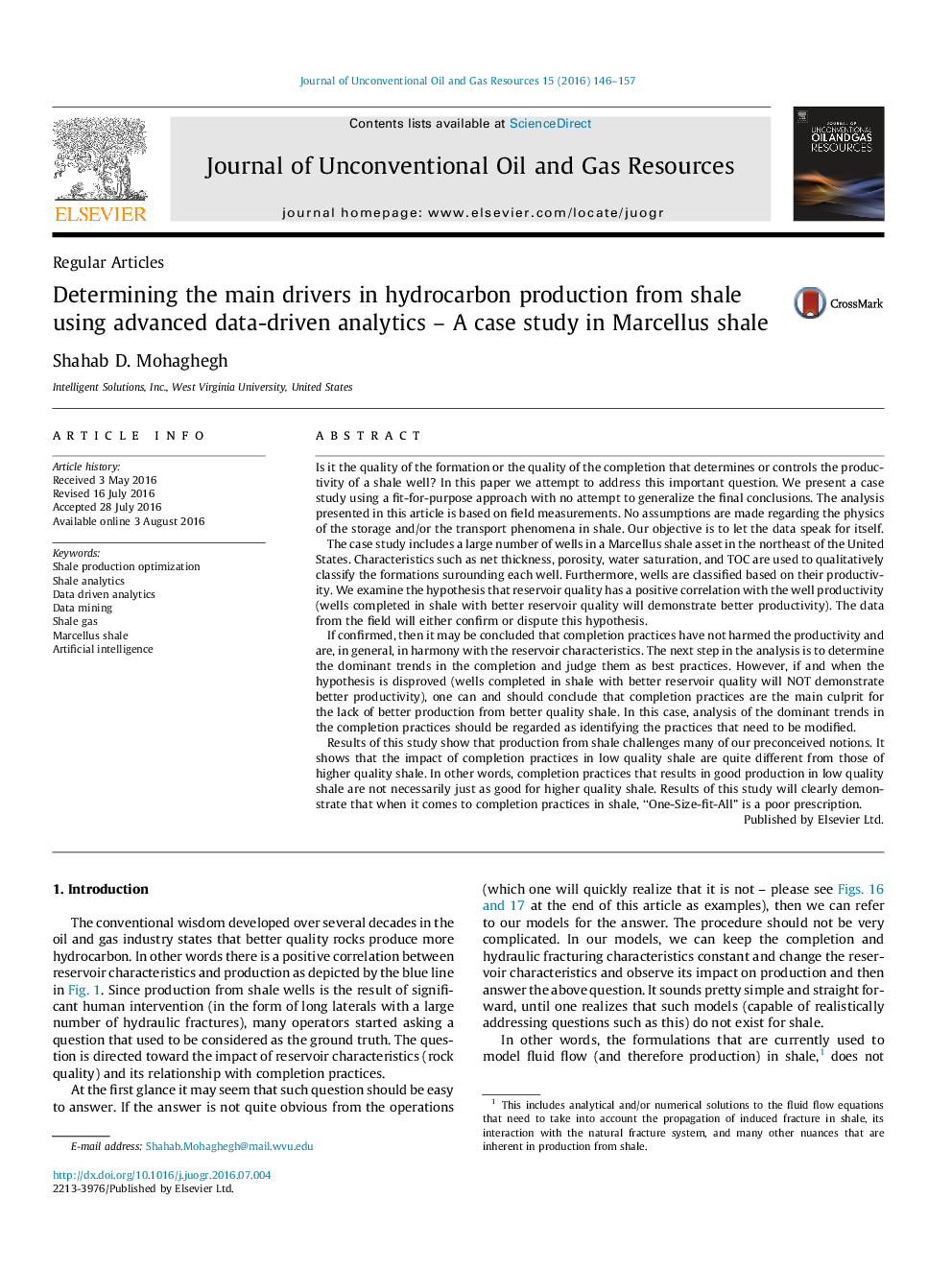| کد مقاله | کد نشریه | سال انتشار | مقاله انگلیسی | نسخه تمام متن |
|---|---|---|---|---|
| 1756654 | 1522947 | 2016 | 12 صفحه PDF | دانلود رایگان |
• AI & data analytics provide important insight into completion practices in shale wells.
• Formation quality can be used as a guide on how to complete shale wells effectively.
• “One-Size-fit-All” design philosophy limits production from the High Quality Shale.
• Completion design is more important HQS than it is in Low Quality Shale.
Is it the quality of the formation or the quality of the completion that determines or controls the productivity of a shale well? In this paper we attempt to address this important question. We present a case study using a fit-for-purpose approach with no attempt to generalize the final conclusions. The analysis presented in this article is based on field measurements. No assumptions are made regarding the physics of the storage and/or the transport phenomena in shale. Our objective is to let the data speak for itself.The case study includes a large number of wells in a Marcellus shale asset in the northeast of the United States. Characteristics such as net thickness, porosity, water saturation, and TOC are used to qualitatively classify the formations surounding each well. Furthermore, wells are classified based on their productivity. We examine the hypothesis that reservoir quality has a positive correlation with the well productivity (wells completed in shale with better reservoir quality will demonstrate better productivity). The data from the field will either confirm or dispute this hypothesis.If confirmed, then it may be concluded that completion practices have not harmed the productivity and are, in general, in harmony with the reservoir characteristics. The next step in the analysis is to determine the dominant trends in the completion and judge them as best practices. However, if and when the hypothesis is disproved (wells completed in shale with better reservoir quality will NOT demonstrate better productivity), one can and should conclude that completion practices are the main culprit for the lack of better production from better quality shale. In this case, analysis of the dominant trends in the completion practices should be regarded as identifying the practices that need to be modified.Results of this study show that production from shale challenges many of our preconceived notions. It shows that the impact of completion practices in low quality shale are quite different from those of higher quality shale. In other words, completion practices that results in good production in low quality shale are not necessarily just as good for higher quality shale. Results of this study will clearly demonstrate that when it comes to completion practices in shale, “One-Size-fit-All” is a poor prescription.
Is it the quality of the formation or the quality of the completion that determines or controls the productivity of a shale well? This case study includes a large number of wells with detail data such as net thickness, porosity, water saturation, and TOC (used to qualitatively classify the formations) and completion characteristics such as proppant size and amount, fluid amount, number of stages, lateral length, etc.Results of this study show that production from shale challenges many of our preconceived notions. It shows that the impact of completion practices in low quality shale are quite different from those of higher quality shale. In other words, completion practices that results in good production in low quality shale are not necessarily just as good for higher quality shale. Results of this study will clearly demonstrate that when it comes to completion practices in shale, “One-Size-fit-All” is a poor prescription.Figure optionsDownload as PowerPoint slide
Journal: Journal of Unconventional Oil and Gas Resources - Volume 15, September 2016, Pages 146–157
